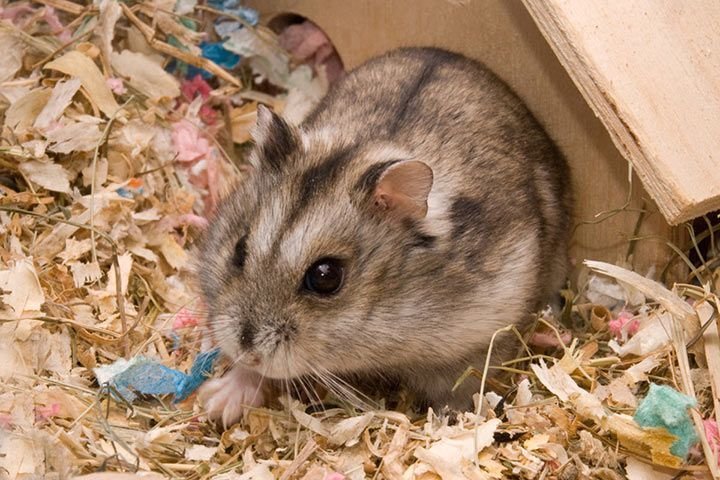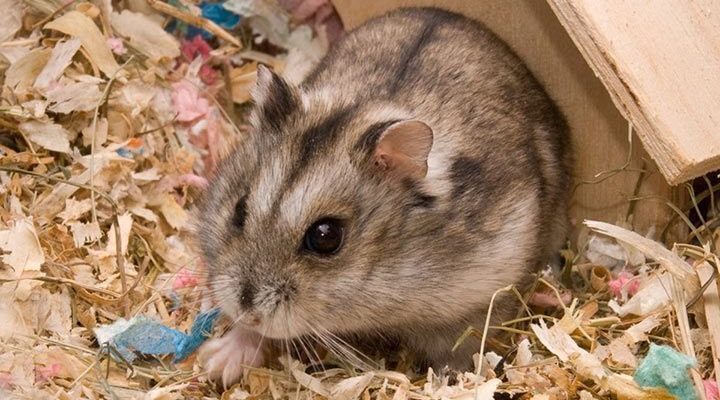
Dwarf Campbell hamsters, often simply called Campbell hamsters, are a charming breed that comes from the cold steppes of Central Asia. They have a special place in the hearts of many hamster fans, and it’s easy to see why. In this article, we’ll dive into their traits, size, and temperament, so you can understand exactly what makes these hamsters tick. Grab your favorite drink, and let’s get started!
What Are Dwarf Campbell Hamsters?
Dwarf Campbell hamsters belong to the category of dwarf hamsters, which include several other species too. They are typically smaller than their Syrian cousins, making them perfect for people looking for a more compact pet. On average, a Dwarf Campbell hamster weighs between 1.5 and 2.5 ounces and measures about 3 to 4 inches in length.
One of the most interesting things about these hamsters is their fur, which can vary from a sandy color to shades of gray and even black. This variety makes them visually appealing, and you might find yourself falling in love with their soft coats and tiny paws. Their round faces and small ears give them an endearing look, and who can resist those bright little eyes?
The Dwarf Campbell hamster is also known for its unique social behaviors. Unlike some other hamster species that prefer solitude, these little guys enjoy living with their peers. So, if you’re up for it, you might consider getting a pair and watching them interact—it can be quite entertaining!
Physical Traits of Dwarf Campbell Hamsters
When it comes to physical traits, Dwarf Campbell hamsters have some fascinating features. First off, let’s talk about those sizes again. They’re tiny, but their little bodies are packed with personality! Their small stature makes them really agile, jumping around with surprising speed and grace.
Their fur is another standout feature. You might find them in various colors, including agouti, which is a mix of shades, or even solid colors like white or black. These furry friends can also have different patterns, such as banded or spotted, which adds a unique touch to each hamster’s appearance.
Their paws are small, which helps them scurry quickly through tunnels or wheels. Speaking of wheels, you should definitely provide one for them! A running wheel is essential for their exercise and mental stimulation, giving them the chance to show off their skills while keeping healthy.
Temperament and Behavior
If you’re wondering about the temperament of Dwarf Campbell hamsters, you’re in for a pleasant surprise. Generally, these hamsters are known to be friendly and social. They can be quite curious too! You might find them exploring their cage or happily nibbling on a snack.
When you first bring one home, patience is key. They might be a bit shy at first, particularly if they’ve just settled in. But here’s the thing—once they get used to their environment, they often become more outgoing and playful. It can be incredibly rewarding to see them come into their own.
These hamsters also communicate in subtle ways. They might squeak or make small noises to express their feelings. If they’re happy and comfortable, you’ll see them darting around their habitat, playing with toys, or even grooming themselves. It’s a joy to observe their little personalities blossom.
Care Requirements for Dwarf Campbell Hamsters
Taking care of Dwarf Campbell hamsters is relatively straightforward, but there are a few important things to remember. First, they need a spacious cage with plenty of enrichment. Think tunnels, chew toys, and a cozy hiding spot where they can snuggle up.
Their diet is crucial too. You should provide a mix of high-quality hamster pellets, fresh fruits, and veggies—just be sure to avoid citrus fruits as they can upset their little tummies. Fresh water should always be available, and you might want to check it daily to ensure it’s clean.
Regular cleaning of their habitat is essential for their health. A clean space helps prevent any potential illnesses. Aim to clean their cage at least once a week, replacing bedding and cleaning surfaces to keep it fresh and inviting for your furry friends.
Socialization Tips
If you choose to have more than one Dwarf Campbell hamster, socialization becomes even more crucial. These hamsters generally enjoy company, but you need to introduce them carefully, especially if they’re not siblings. Start by placing their cages next to each other to let them get used to one another’s presence.
When you feel it’s time for them to meet, do it in a neutral space. Make sure it’s a safe environment where they can interact without the confines of their cages. Observing their behavior is key; watch for signs of aggression or distress and be ready to separate them if needed.
If you’re handling your hamster, do so gently. Let them sniff your hand before picking them up, and be sure to support their bodies. Many owners find that their Dwarf Campbell hamsters become quite affectionate over time, enjoying snuggles and handling once they’re comfortable with you.
Common Health Issues
Like any pet, Dwarf Campbell hamsters can face health challenges. Wet tail is one of the most common problems, a condition caused by stress or an unhealthy diet. It’s crucial to watch for signs like diarrhea or lethargy, and if you notice anything unusual, don’t hesitate to consult a vet.
Another potential concern is obesity, which can occur if a hamster is overfed or not given enough exercise. Keep an eye on their weight and ensure they have a balanced diet along with plenty of opportunities to run around and play.
Lastly, dental issues can arise, as hamsters’ teeth continuously grow. Providing chew toys helps them wear down their teeth naturally, preventing overcrowding and discomfort. Regularly checking their teeth is a good practice to ensure they’re healthy.
Owning a Dwarf Campbell hamster can be a fulfilling experience filled with joy and laughter. Their vibrant personalities and small size make them great pets for beginners and seasoned hamster lovers alike. Just remember to provide the right care, including a proper diet, a clean environment, and plenty of love and attention.
These adorable little creatures not only make for fantastic companions but also bring a sense of wonder as you watch them explore and interact. If you’re contemplating welcoming one into your home, it’s sure to be an adventure filled with delightful moments and plenty of cuteness. So go ahead, take the plunge, and enjoy every moment with your new furry friend!

